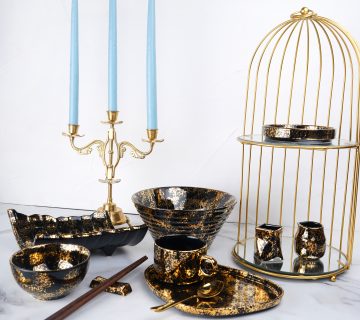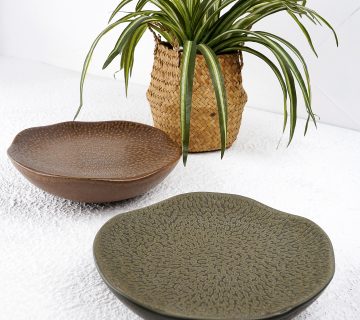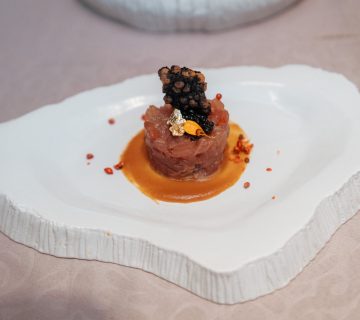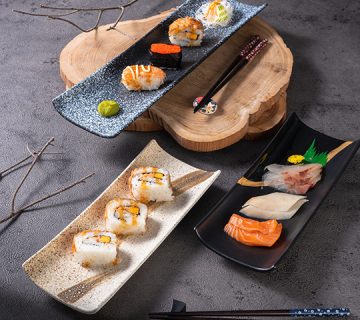Introduction
Tableware plays a significant role in enhancing dining experiences, transforming meals into memorable occasions. Whether it’s a casual family dinner or an extravagant feast, the choice of tableware can elevate the ambiance and make a lasting impression on guests. This article explores the world of tableware, highlighting its importance, evolution, and various types available in the market.
The Importance of Tableware
Tableware is more than just a collection of dishes and utensils; it is an essential component of the dining experience. The right tableware can set the tone, reflecting the occasion and personal style. For instance, a formal dinner may call for fine bone china and crystal glassware, while a casual gathering may warrant more relaxed and durable options. Tableware not only serves functional purposes but also acts as an expression of art and creativity.
Evolution of Tableware
Tableware has a rich history that dates back centuries. In ancient times, people used simple vessels made from clay, wood, or stone for dining purposes. As civilizations progressed, tableware evolved, incorporating more intricate designs and materials like bronze, silver, and gold. The Middle Ages witnessed the rise of the aristocracy, leading to the use of lavish tableware made of precious metals and adorned with intricate engravings.
The Industrial Revolution in the 18th century marked a significant turning point in the tableware industry. Mass production techniques made tableware more accessible to the middle class, with factories producing ceramics, glassware, and metalware at affordable prices. The 20th century brought further advancements, with the introduction of new materials like stainless steel and synthetic materials, revolutionizing the tableware market.
Types of Tableware
Tableware encompasses a wide range of products, each serving a specific purpose. Here are some popular types of tableware:
- Dinnerware: Dinnerware sets include plates, bowls, and serving platters. They come in various materials such as porcelain, bone china, stoneware, and earthenware. The choice depends on personal preference and the desired level of formality.
- Glassware: Glassware includes wine glasses, water glasses, and champagne flutes. They are available in different shapes and sizes to enhance the drinking experience and complement various beverages.
- Cutlery: Cutlery consists of knives, forks, and spoons. It can be made of stainless steel, silver, or even gold. The design and quality of cutlery greatly impact the overall dining experience.
- Serveware: Serveware includes serving dishes, trays, and bowls used for presenting and serving food. They come in various materials and designs, allowing for creative and appealing food presentations.
- Table Linens: Table linens, such as tablecloths, napkins, and placemats, add a touch of elegance to the dining table. They come in a wide range of fabrics, colors, and patterns to suit different occasions and themes.
Choosing the Right Tableware
Selecting the right tableware involves considering several factors. Firstly, the occasion and desired ambiance play a crucial role. Formal events call for more sophisticated and delicate tableware, while informal gatherings allow for more casual and durable options. Secondly, personal style and preferences should be considered to ensure a cohesive and aesthetically pleasing table setting. Lastly, practicality and ease of maintenance should be taken into account, as some materials require special care and attention.
Caring for Tableware
Proper care and maintenance are essential for preserving the quality and longevity of tableware. Most tableware can be safely cleaned in dishwashers, but delicate items like fine china or crystal glassware may require handwashing. It is important to follow the manufacturer’s instructions and avoid using abrasive cleaners or harsh chemicals that may damage the tableware’s surface or finish.
For ceramic and porcelain tableware, gentle handwashing with warm water and mild dish soap is recommended. Avoid using metal scouring pads or abrasive sponges that can scratch the surface. For stubborn stains, soaking the tableware in a mixture of water and baking soda before washing can help remove the residue.
Glassware should be handwashed to prevent chipping or breakage. Use a soft sponge or cloth to clean the glassware and avoid sudden temperature changes, as extreme heat or cold can cause cracking. It’s also advisable to hold the glass by the stem to prevent leaving fingerprints on the bowl.
Cutlery made of stainless steel or silver should be washed promptly after use to prevent tarnishing. Handwashing with mild soap and warm water is generally recommended, as the dishwasher can cause discoloration or damage to the handles. After washing, dry the cutlery thoroughly to prevent water spots or corrosion.
When storing tableware, consider using protective dividers or soft cloths to prevent scratches and damage. Avoid stacking delicate items too tightly, as this can lead to chipping or breakage. If using a dishwasher for cleaning, ensure that the tableware is securely placed to prevent it from moving around and potentially getting damaged.
Conclusion
Tableware is an integral part of the dining experience, combining functionality with aesthetic appeal. From dinnerware and glassware to cutlery and serveware, the choices are vast and diverse. The evolution of tableware throughout history has brought us a wide range of materials, styles, and designs to suit various occasions and personal preferences. Selecting the right tableware involves considering the occasion, personal style, and practicality. By taking proper care of tableware, we can ensure its longevity and preserve its beauty for years to come. So, the next time you set the table, remember that the right tableware can truly enhance your dining experiences and make them truly unforgettable.







